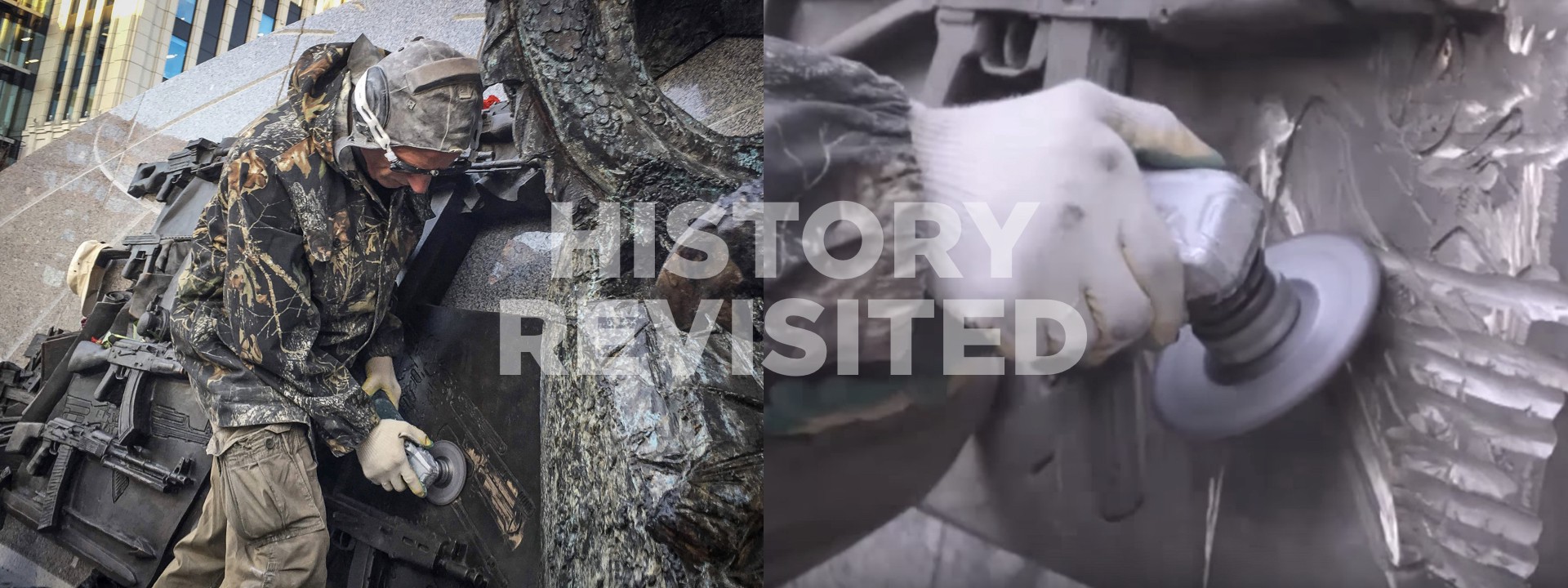#HistoryRevisited: Monumental Controversy in Russia
A brief look into how Russia is using statues to set their historical narrative
#HistoryRevisited: Monumental Controversy in Russia

A brief look into how Russia is using statues to set their historical narrative

Throughout history, countries have used statues and monuments as a way to preserve a dominant historic narrative. While the United States is currently engaged in its own public debate on how to deal with certain monuments representing the past, Russia continues to use monuments to reinforce the Soviet legacy.
Post-Soviet states regard the presence of Lenin statues erected by the Soviet Union as symbols of repression. The Kremlin devotes great care to preserving statues that represent Russia’s preferred historical narrative in post-Soviet states. By preserving the preferred narrative, Russia aims to exert influence in the region.
Ukraine just removed the last Lenin statues as a symbol of independence from Russia, Poland recently abolished Soviet soldiers’ statues, and Lithuania added signs on particular monuments, which note representation of a falsified history. Each maneuver outraged the Kremlin. In most cases, Russia’s sensitivity to the narrative leads the country to ignore historical facts in favor of their chosen narrative. Everything that doesn’t fit must go, which happened with the newly unveiled Mikhail Kalashnikov’s monument.
The Kalashnikov Fiasco
Russia unveiled a new monument to Mikhail Kalashnikov on September 19 on Sadovaya-Karetnaya (Садовая-Каретная) street in Moscow, Russia. Kalashnikov was a Soviet engineer, who passed away in 2013 and supposedly created the infamous Kalashnikov rifle (AK), arguably the most popular and recognizable weapon in the world.

The newly minted monument consists of two bronze sculptures on large stone pedestals. The first sculpture portrays Mikhail Kalashnikov holding an AK-47 rifle. The second sculpture depicts St. George, the patron saint of Russia, slaying a dragon with a spear tipped with a rifle sight with AK-47 written on it, and the pedestal depicts the evolution of AK weapons.
The AK is a source of national pride and a symbol of Russian culture. Many Russians regard Kalashnikov as a national hero, making it unsurprising that the Kremlin decided to immortalize him in stone.

Controversy erupted over the statue three days after its unveiling, when observers noticed Kalashnikov’s statue included the blueprint of a German Sturmgewehr 44 (StG44) rifle. The sculptor admitted the blueprint on the sculpture did accidentally depict the StG44 and promised to rectify the error.

The blueprint depicted in the sculpture is an exact match for the StG44 blueprint.

Workers rectified the error by sawing and scraping that part of the sculpture off. Metal workers armed with electric saws came on September 22nd and removed the unwanted part.

The alterations were clearly visible after workers finished removing the controversial part of the statue.

Historical Context
The sculptor’s error revived an old debate about the origins of the gun. Some historians suggest that Kalashnikov did not actually invent the AK; a claim Russia has long denied. Not only does the AK-47 resemble the appearance of the StG44, but the inventor of StG44 worked at the same Izhevsk factory in the late 1940s as a prisoner of war.
Russian media-outlets quickly coalesced around a narrative denying the similarities between the two weapons. A news report from Russia 24 (Россия 24) provided in-depth arguments, including interviews from the sculptor himself. The news program also invited weapon experts to state their case.
https://www.youtube.com/watch?v=dx20nYnZAMg
Both sides participated in dueling online comments related to the reports and articles. Many of the comments that appeared on YouTube took a negative tone and shamed Russian officials for distorting history.



A few memes also appeared on VKontakte (ВКонтакте) making fun of the Kalashnikov monument controversy.

Strange Similarities
Astute observers noticed another peculiarity about the monument: the statue of St. George closely resembles Russian President Vladimir Putin. Even though there is no clear evidence proving intent, the status does bear an uncanny resemblance to Putin. This idolization of Putin has precedent in Russia. In May 2016 a bust of Putin as a Roman Emperor was unveiled near St. Petersburg.


Conclusions
The Kalashnikov monument controversy sparked a major online discussion. The rapid response from Russian officials and media demonstrates the Kremlin’s focus on positive historical narratives. This case correlates with instances across the former Soviet Union, in which Russia defends or redefines friendly historical narratives. The Kremlin sees the protection of their historical narrative, especially their version of World War II history, as crucial to preserving the current regime. Statues comprise just one front of Russia’s wider information manipulation tactics, but their playbook is not written in stone.
Follow along for more in-depth analysis from our #DigitalSherlocks.

